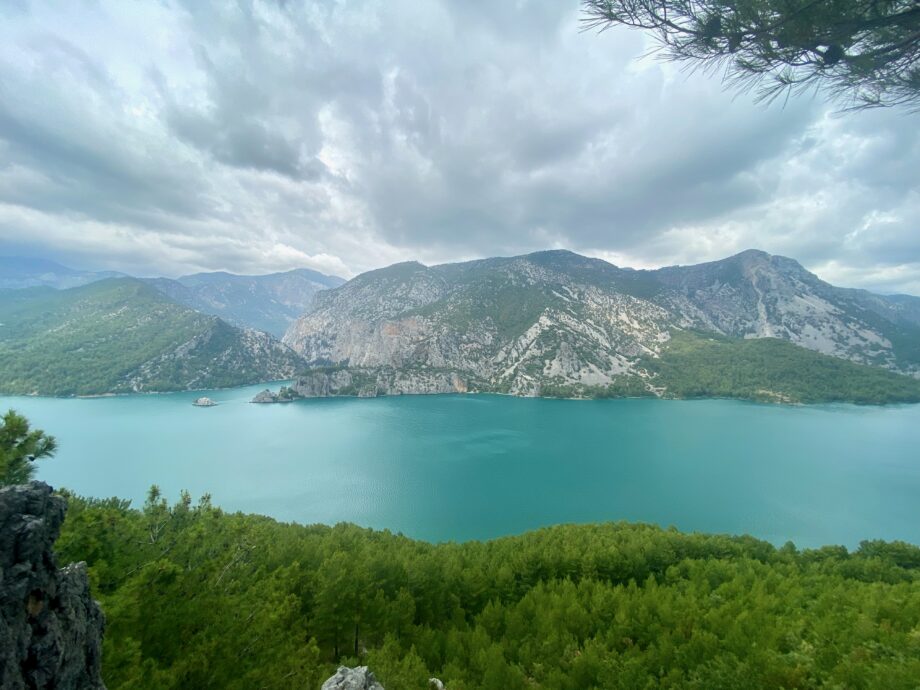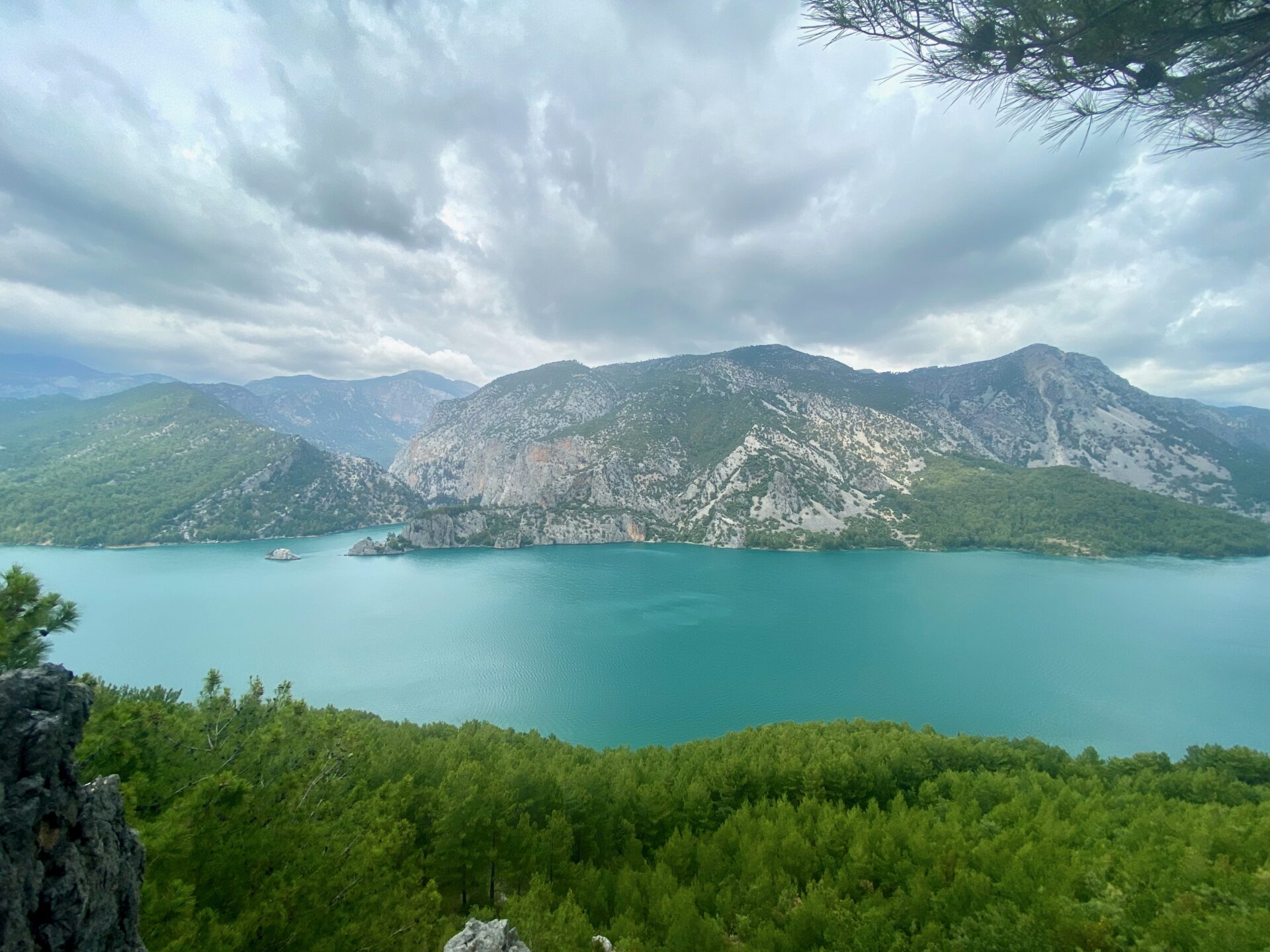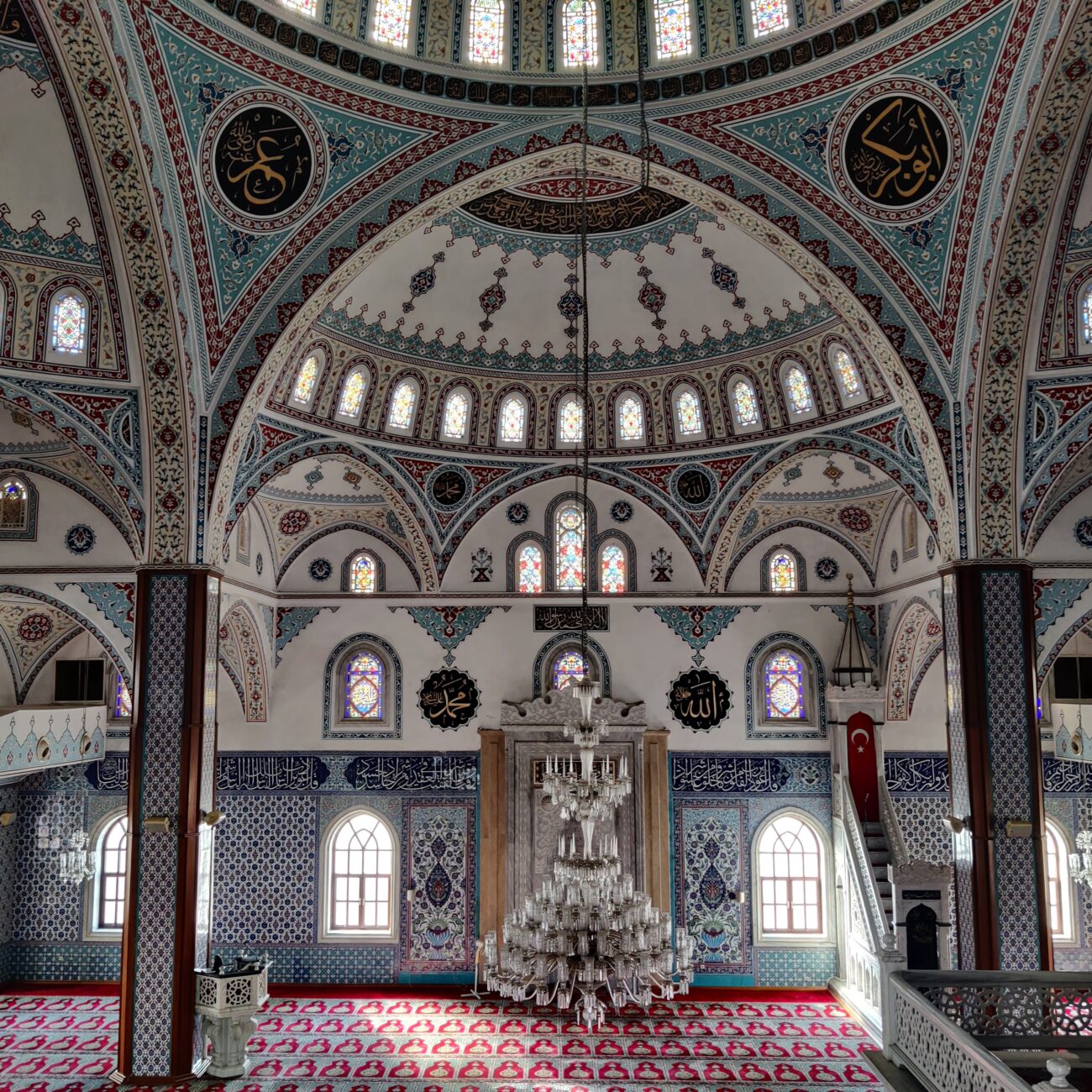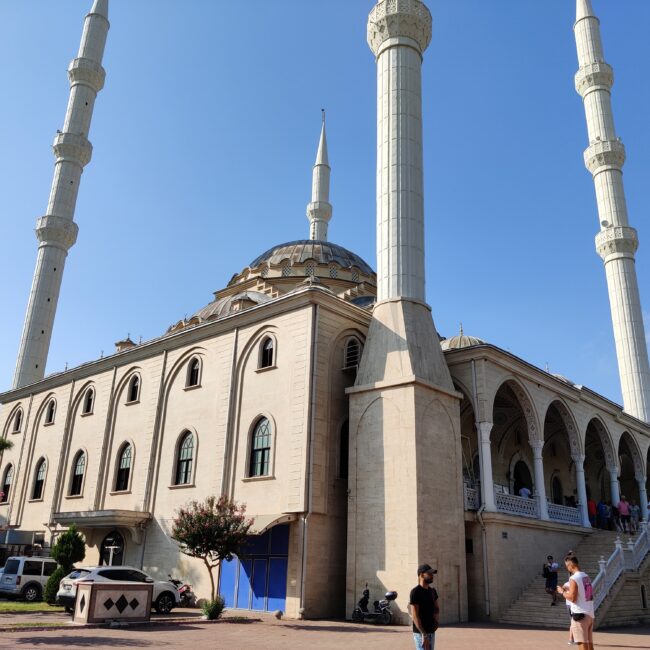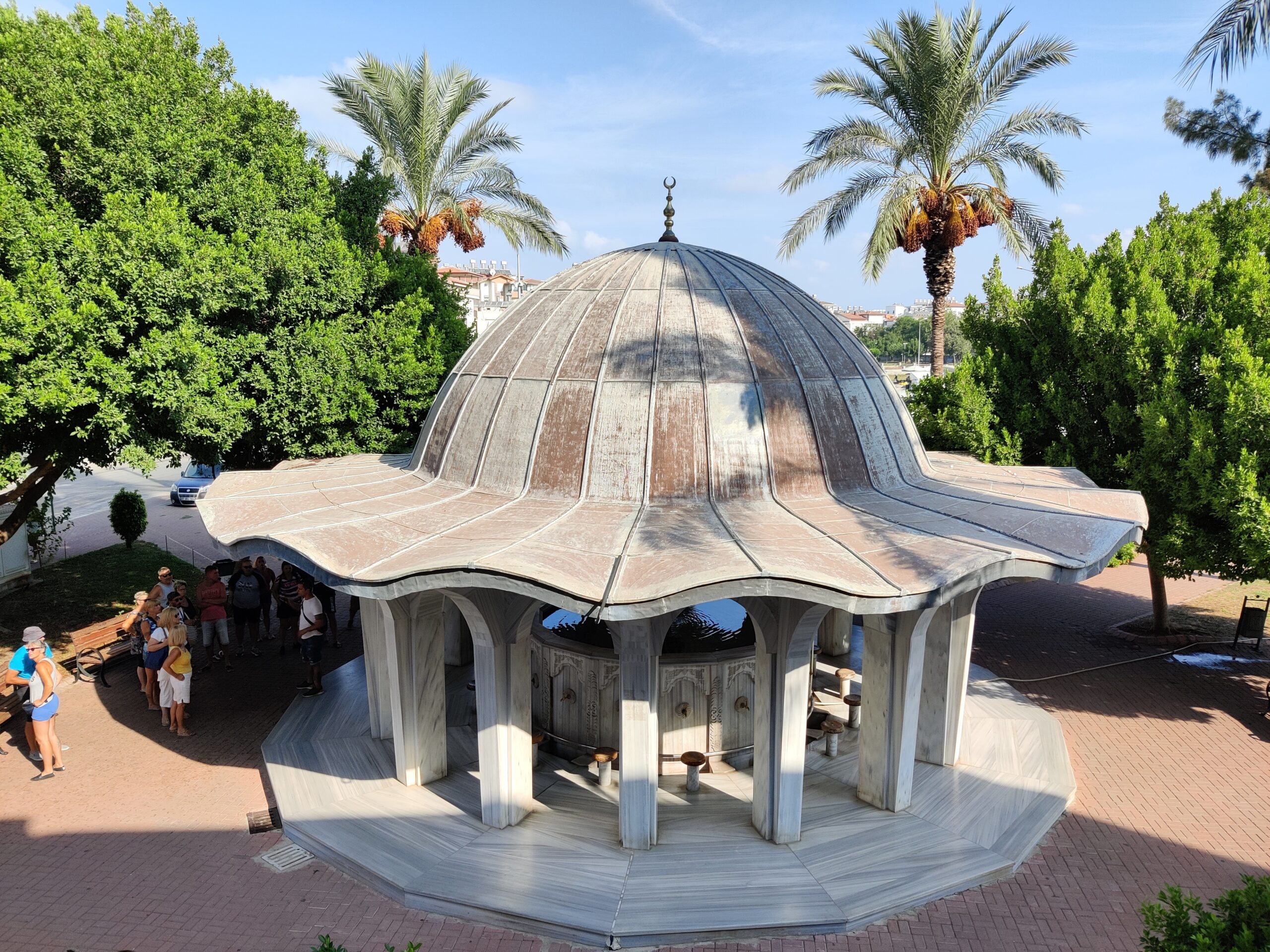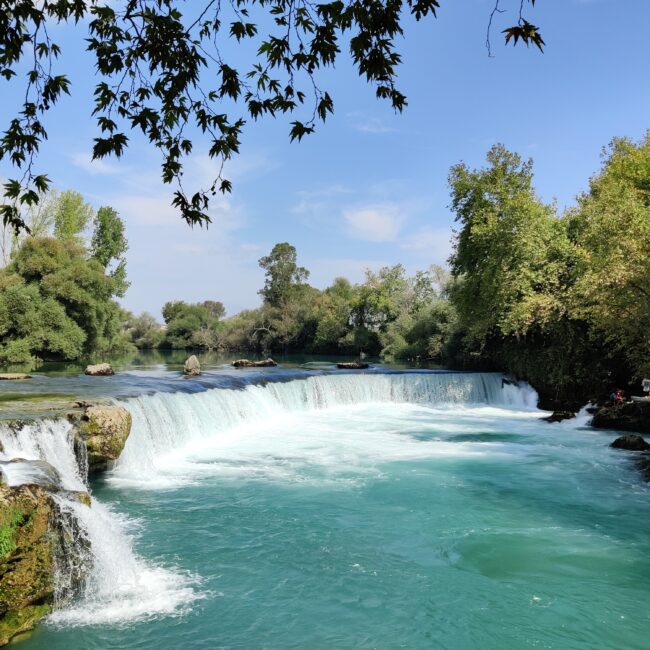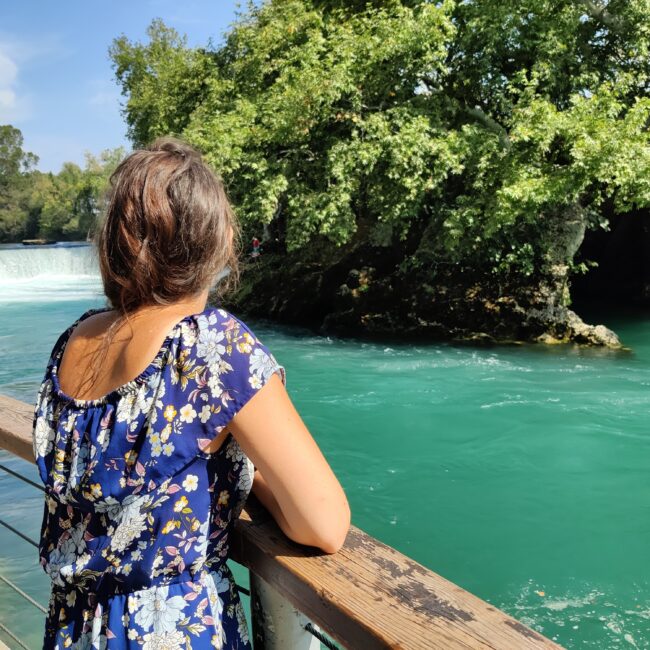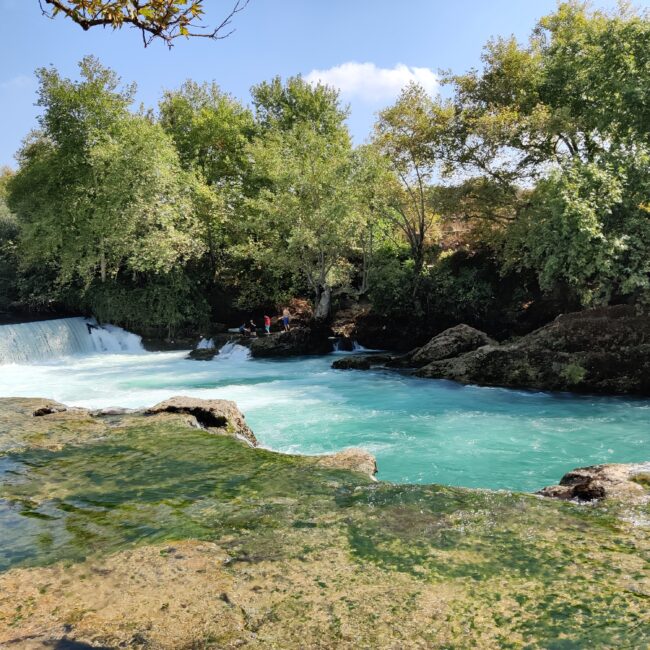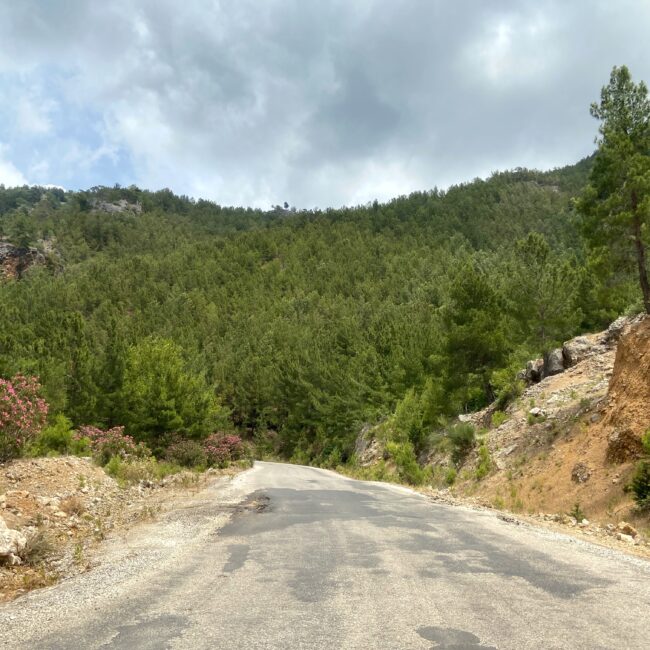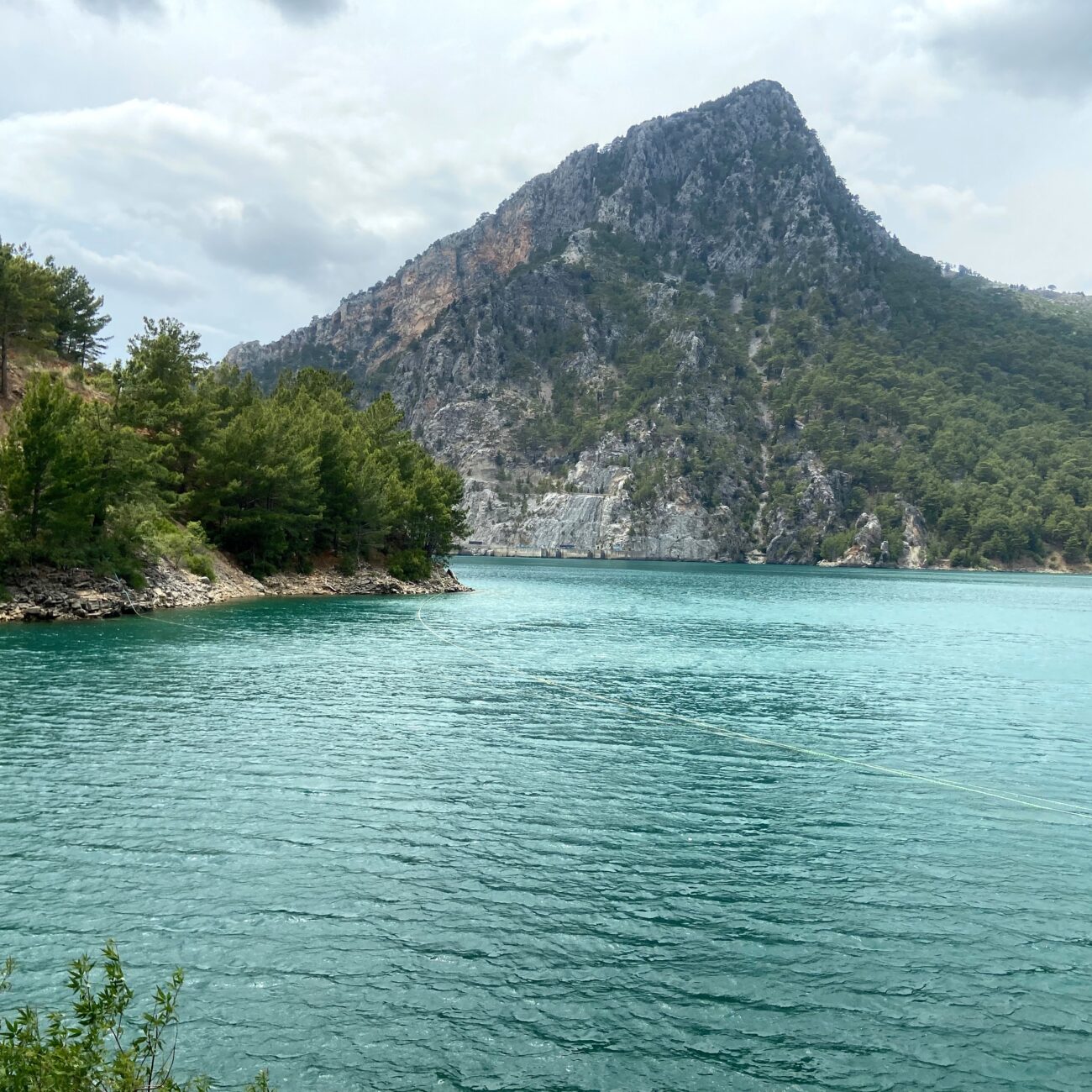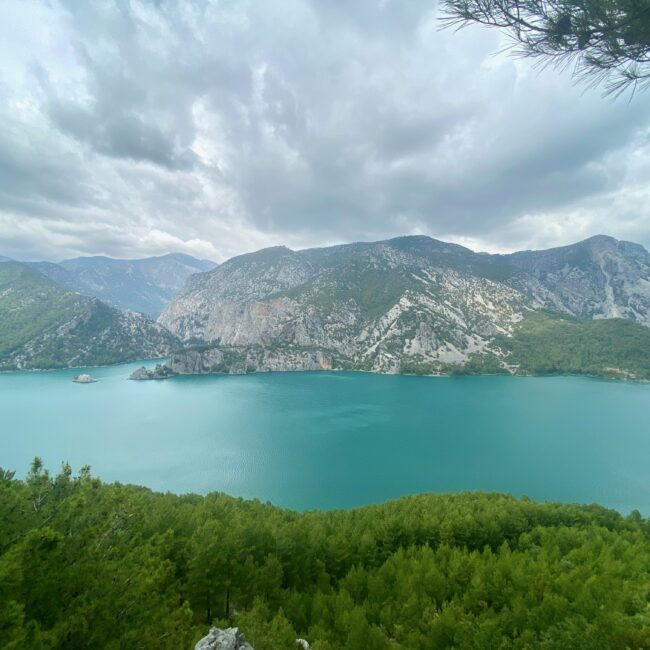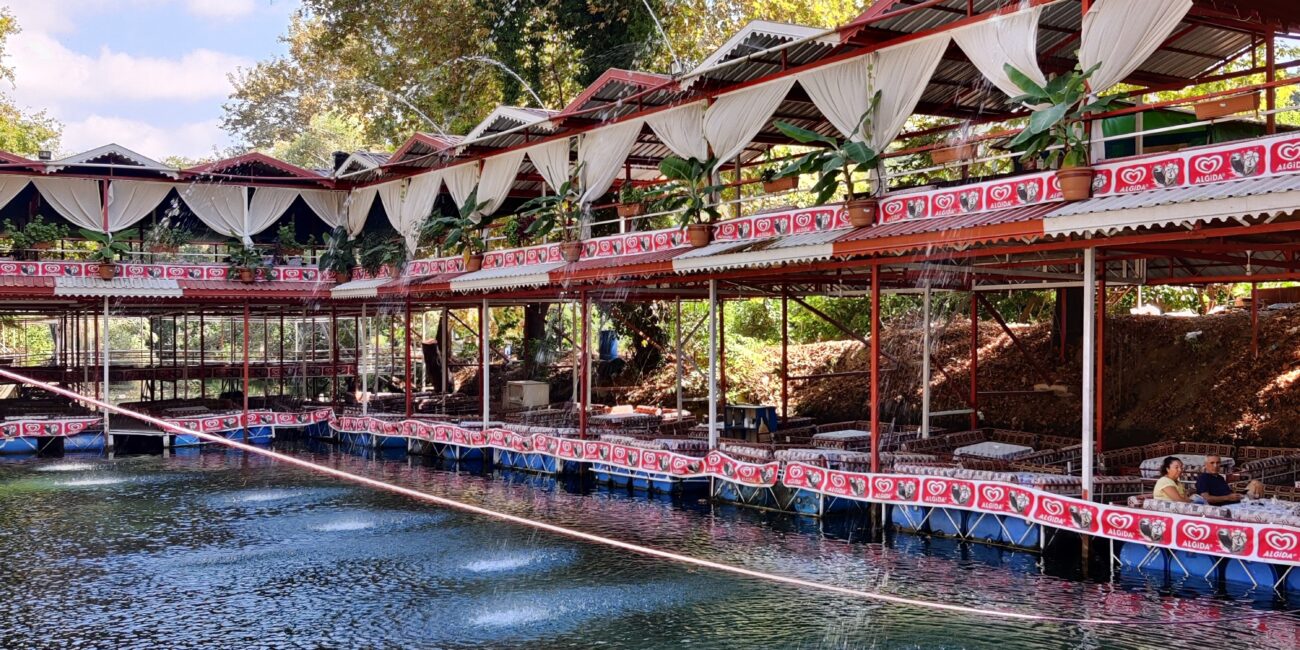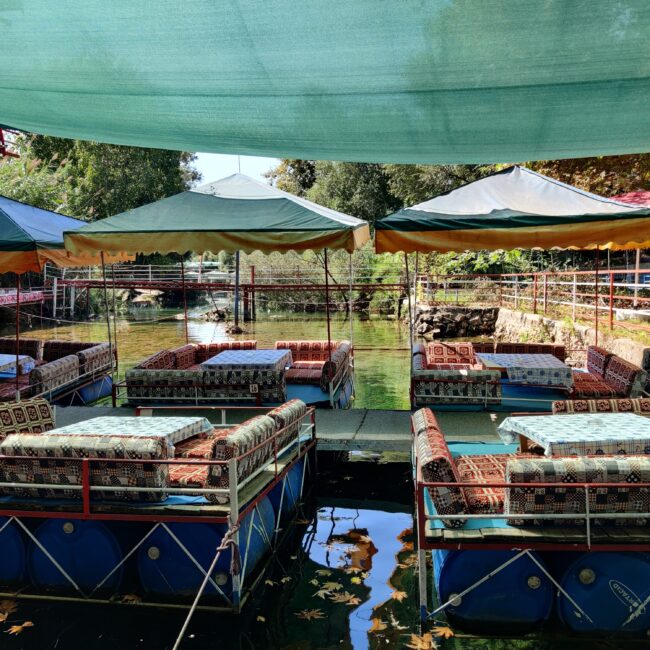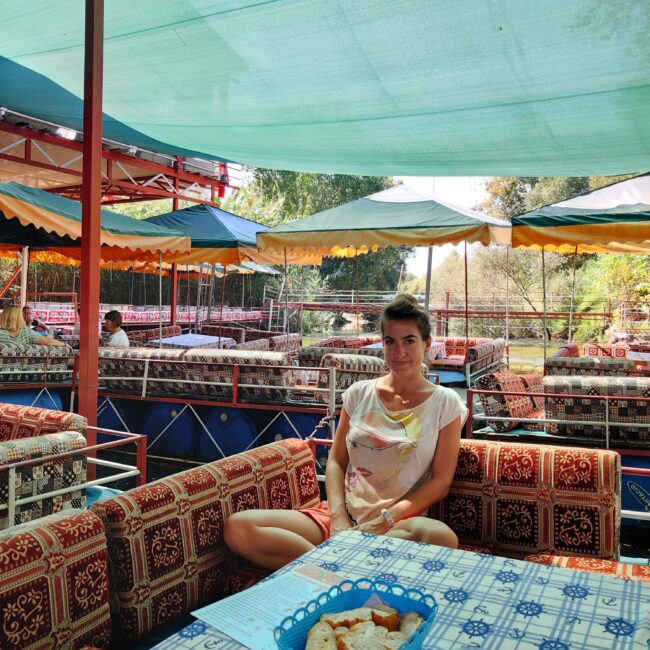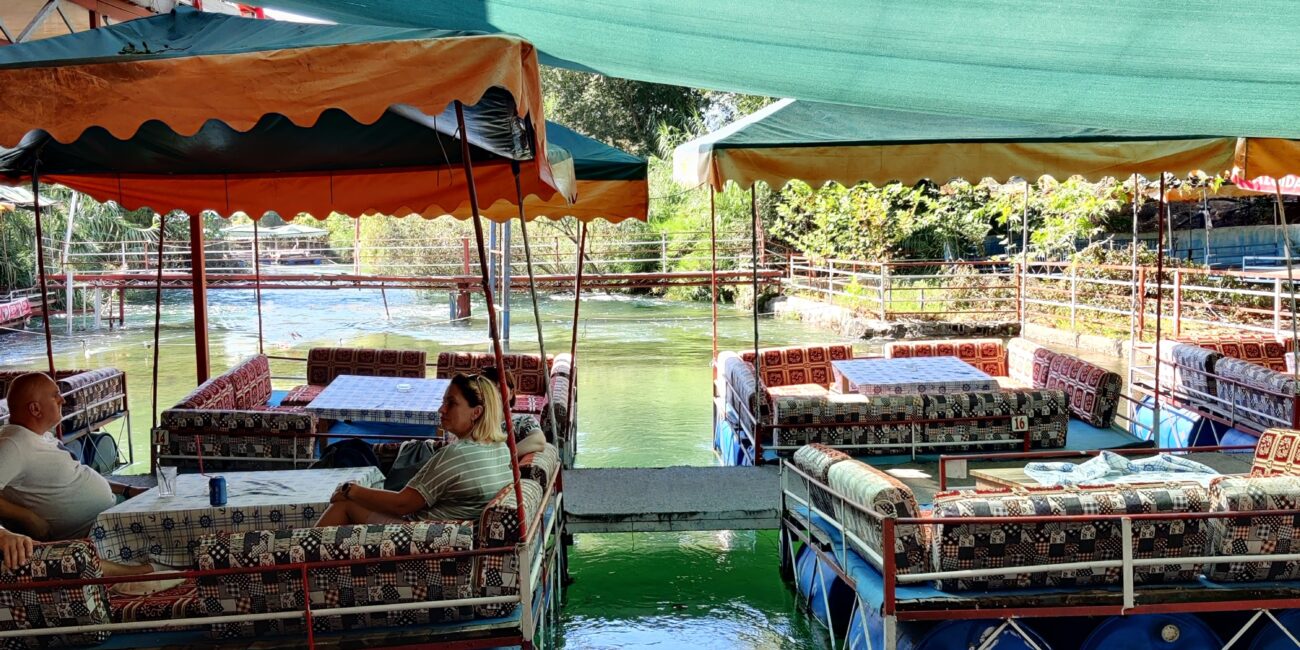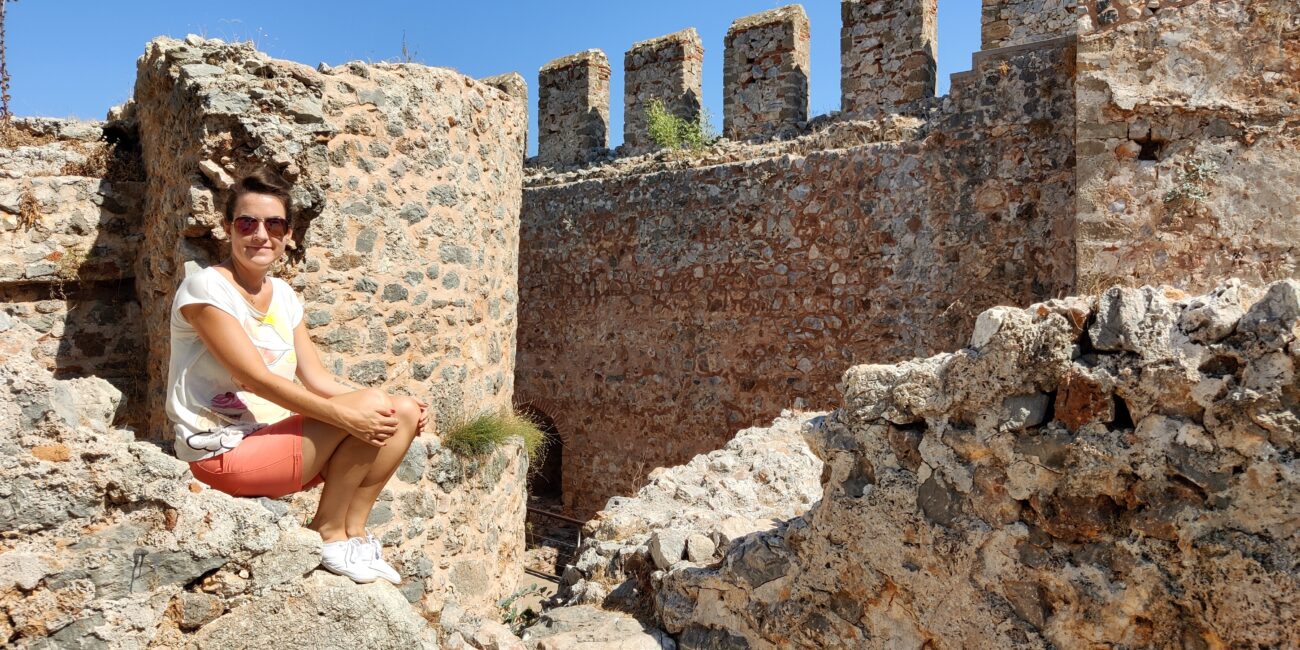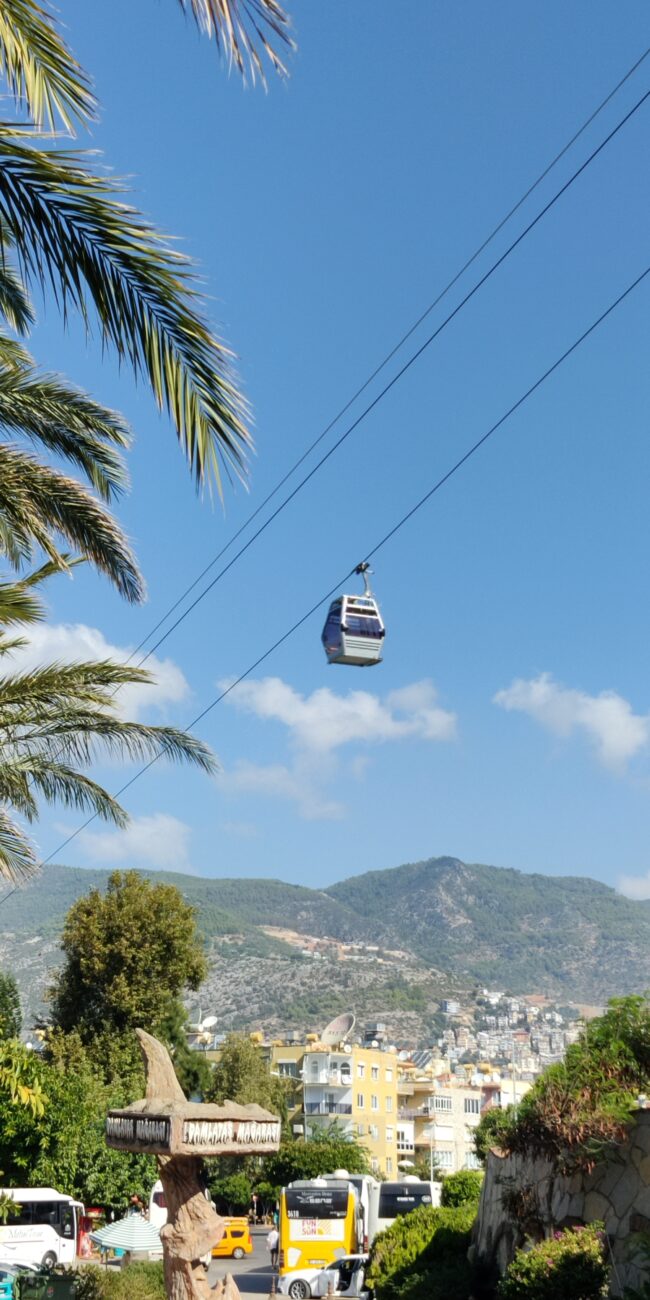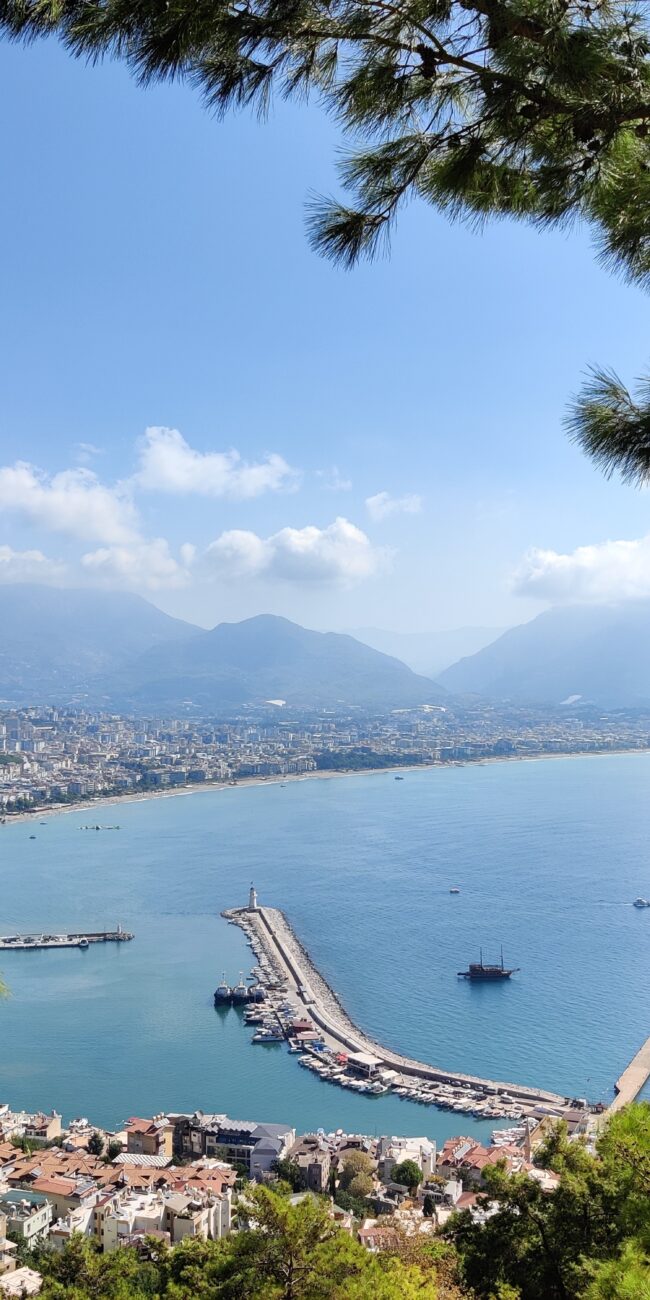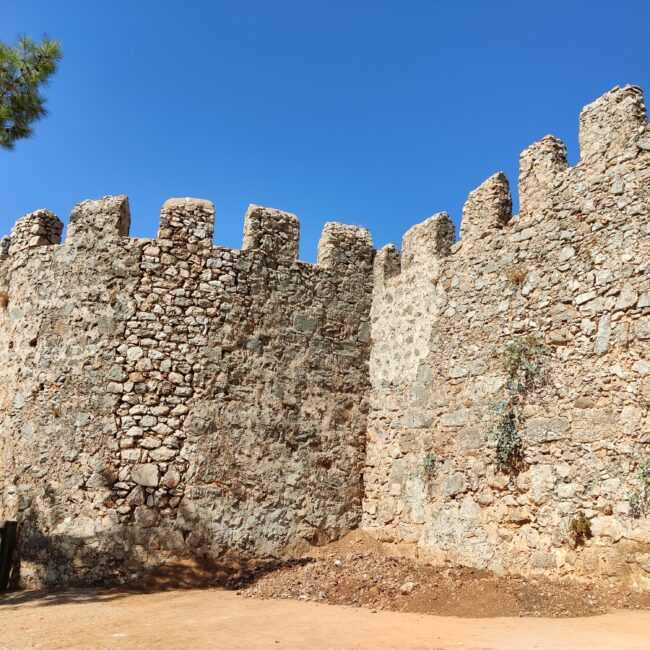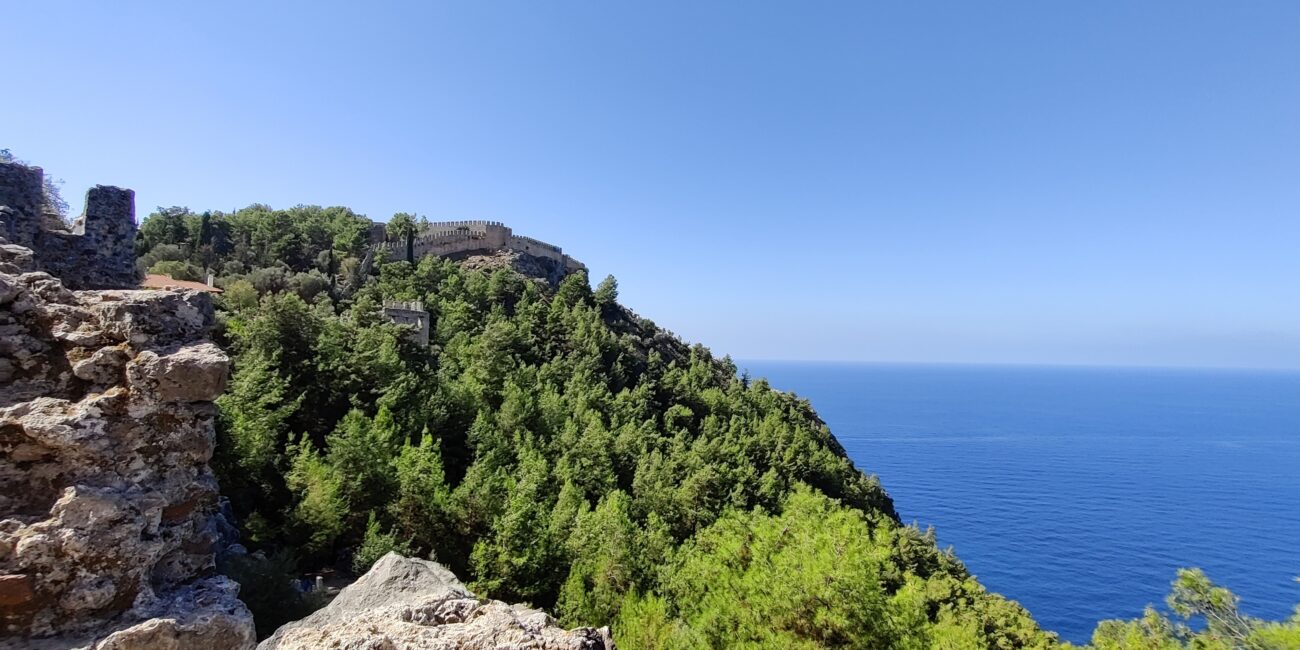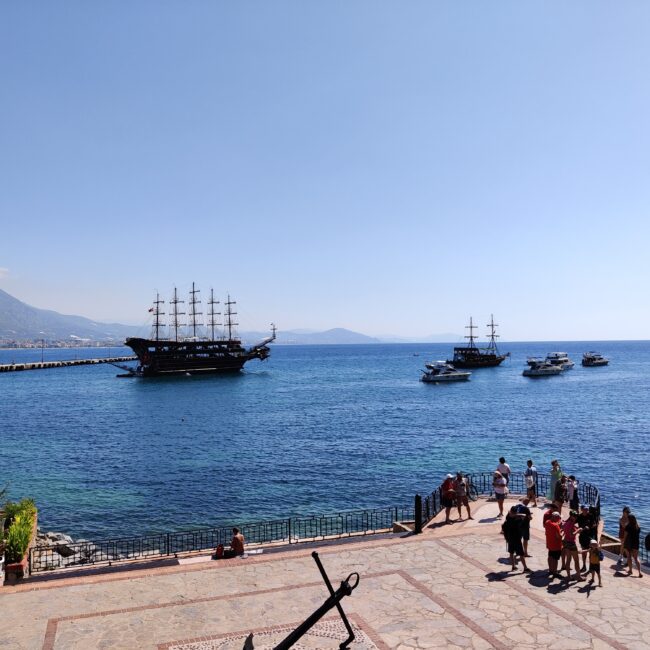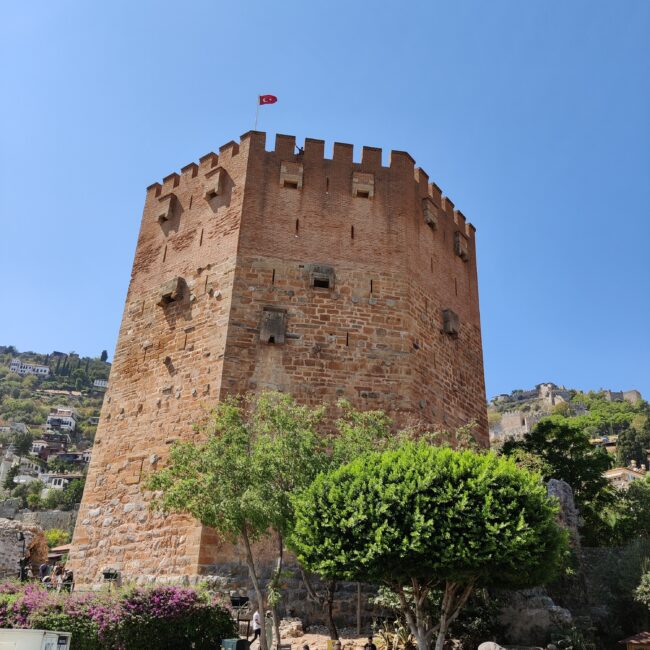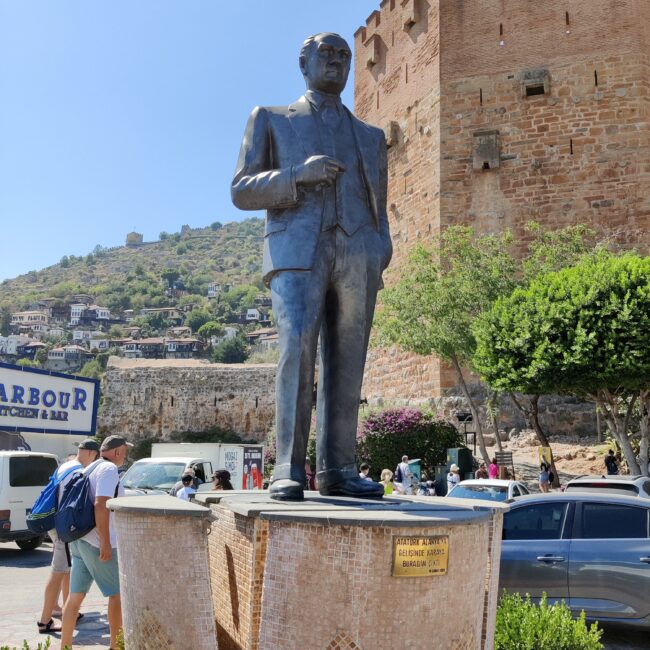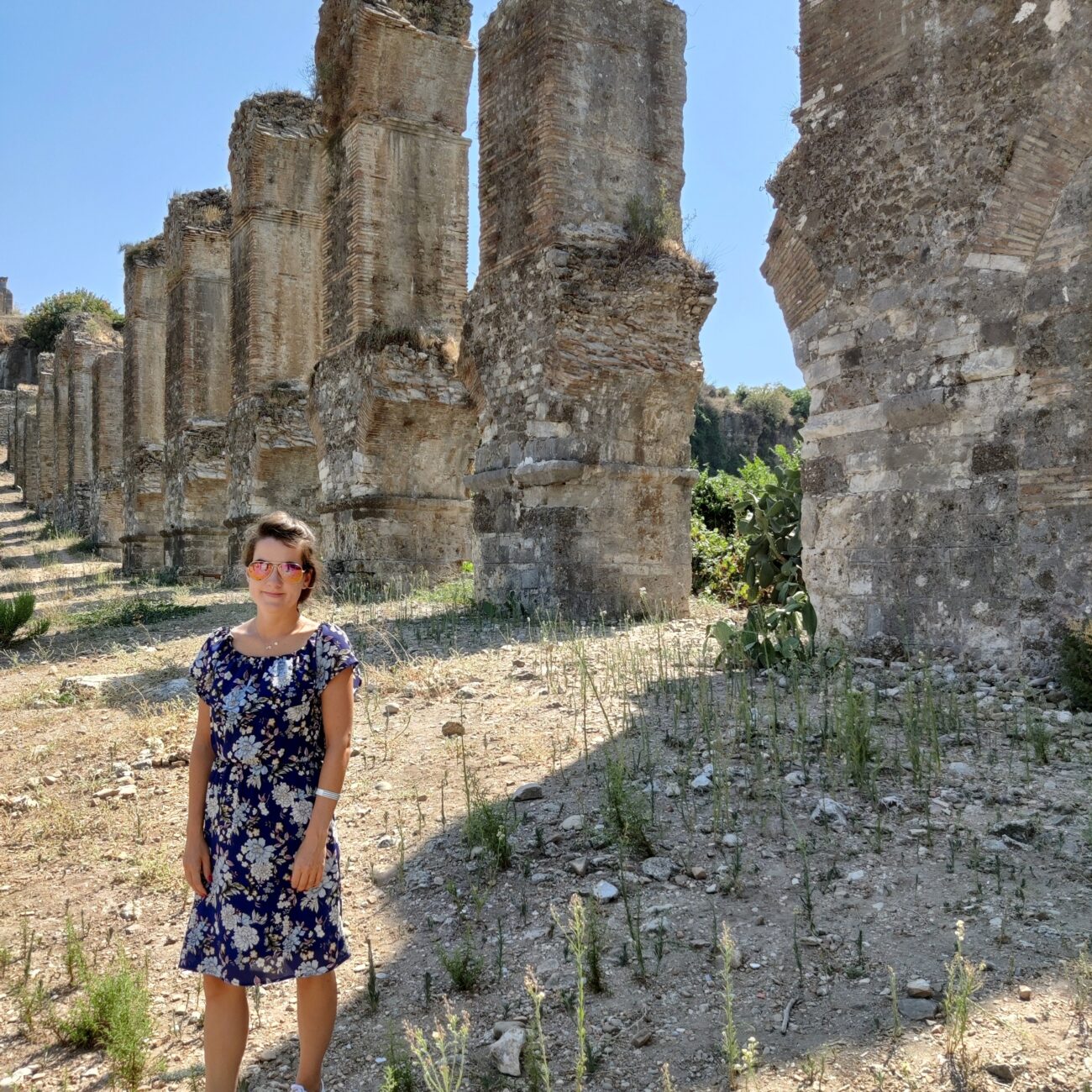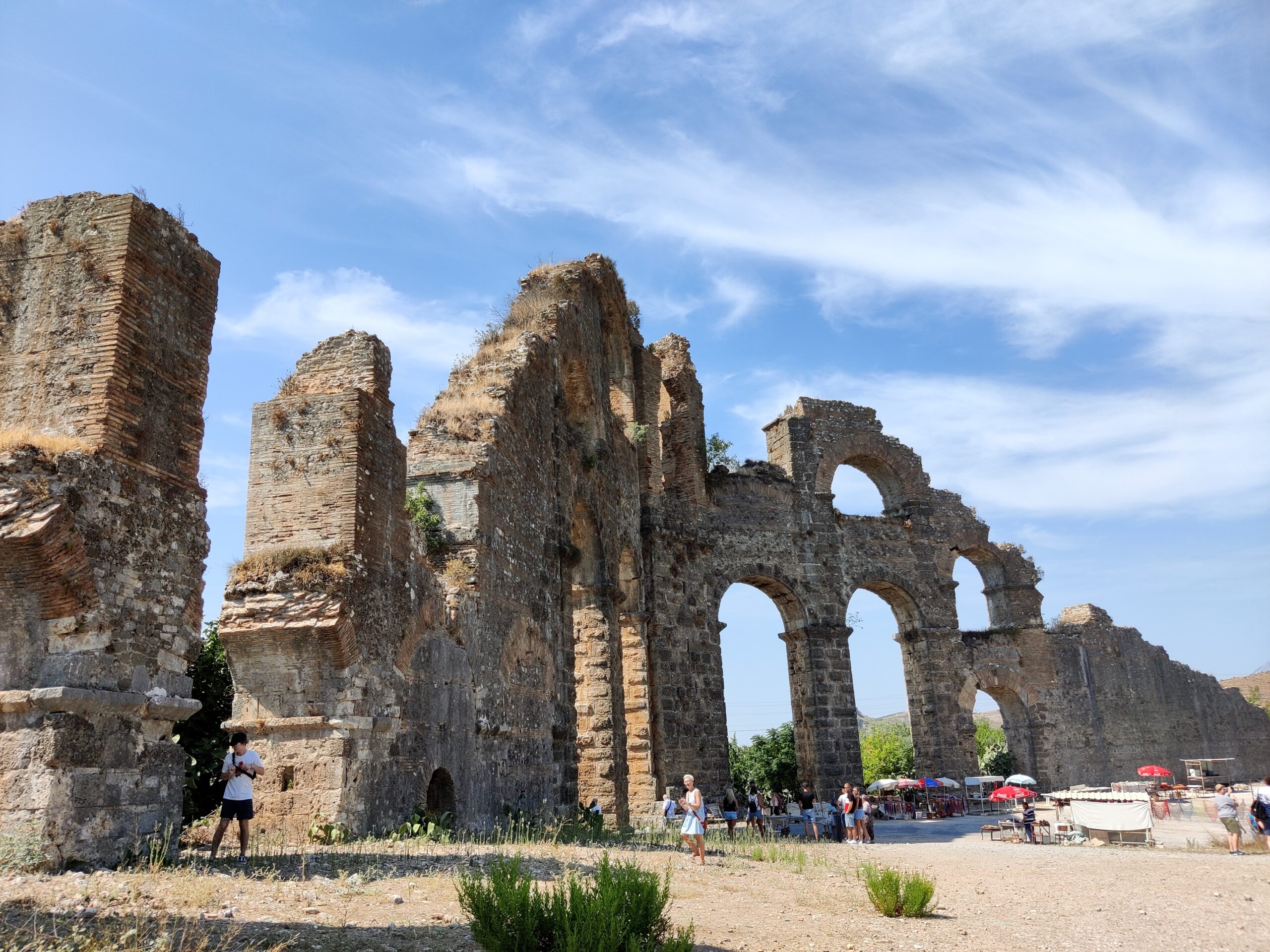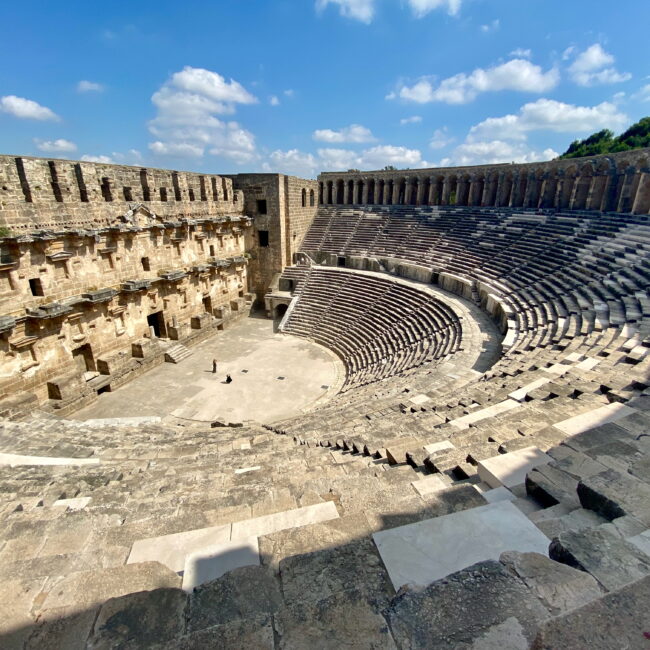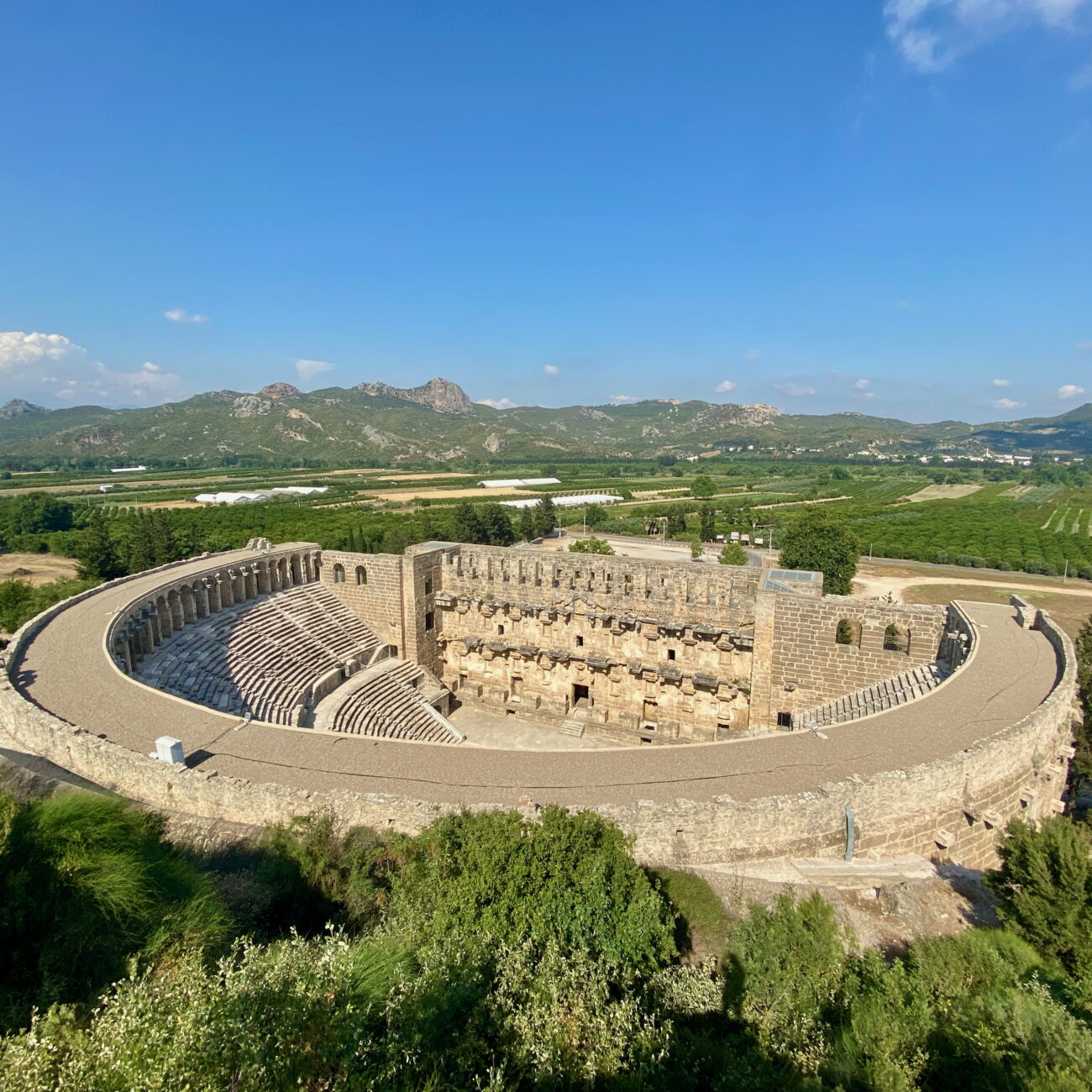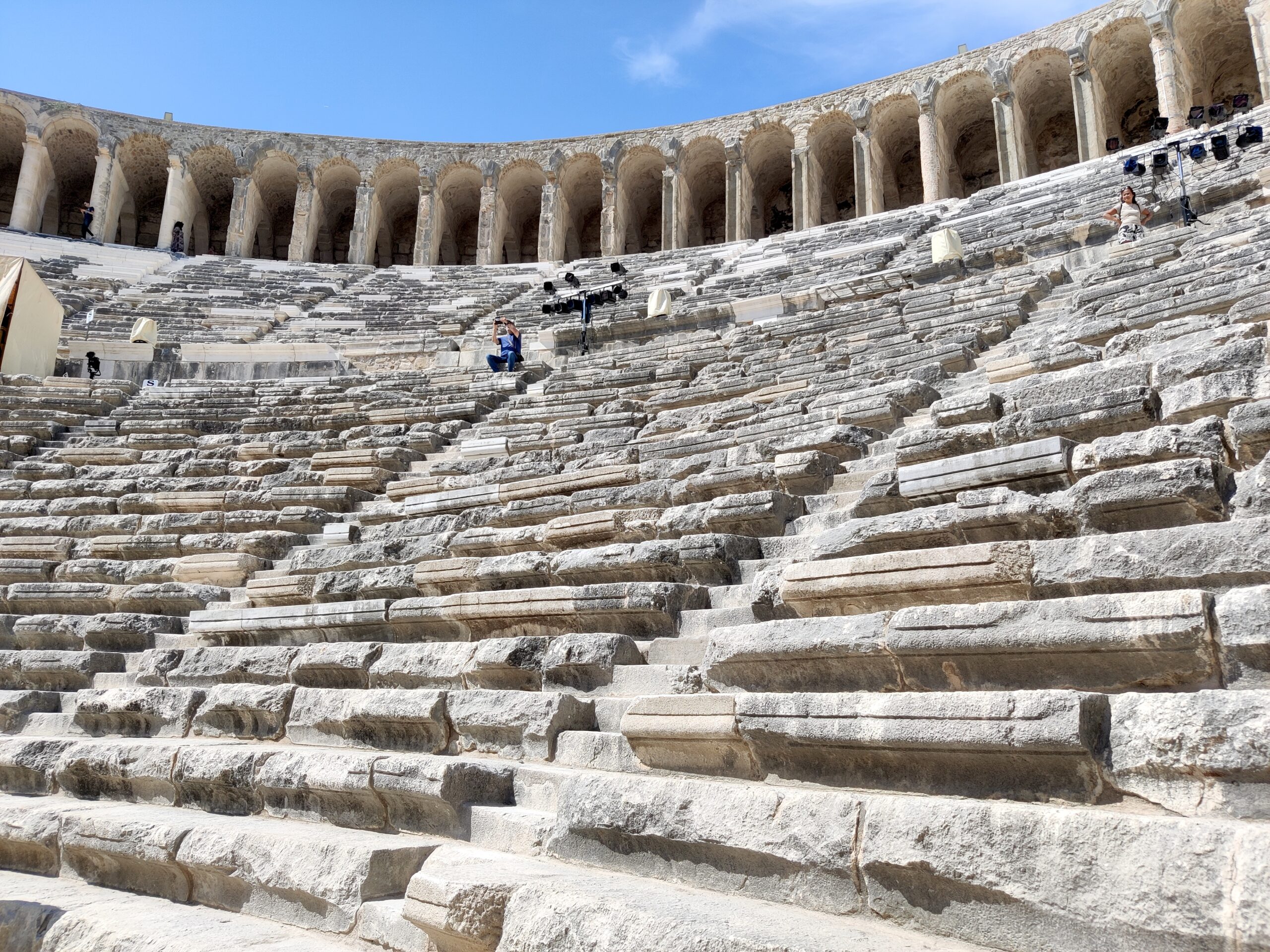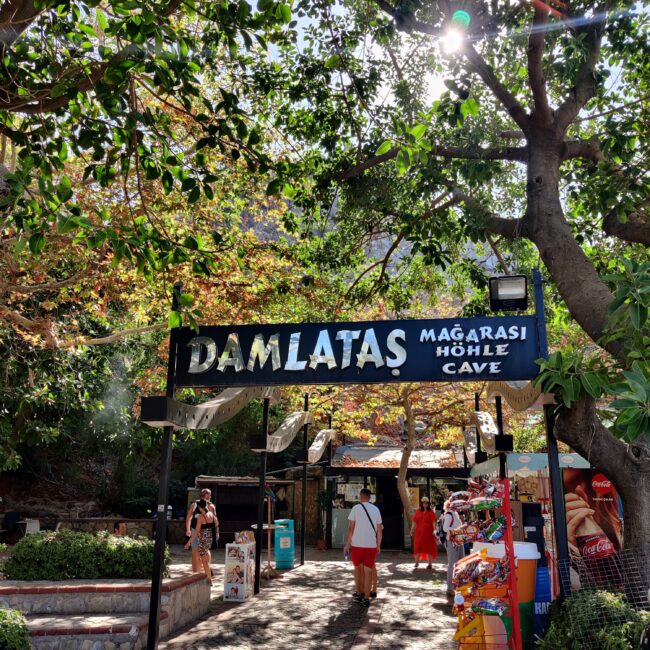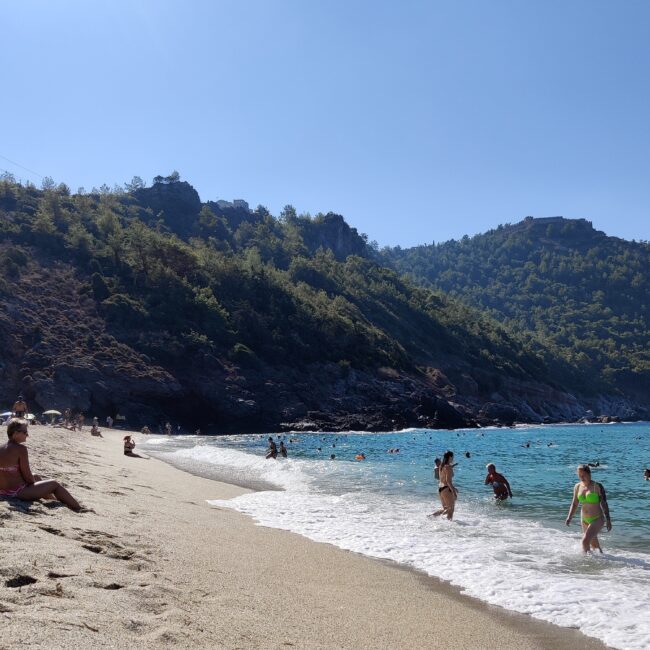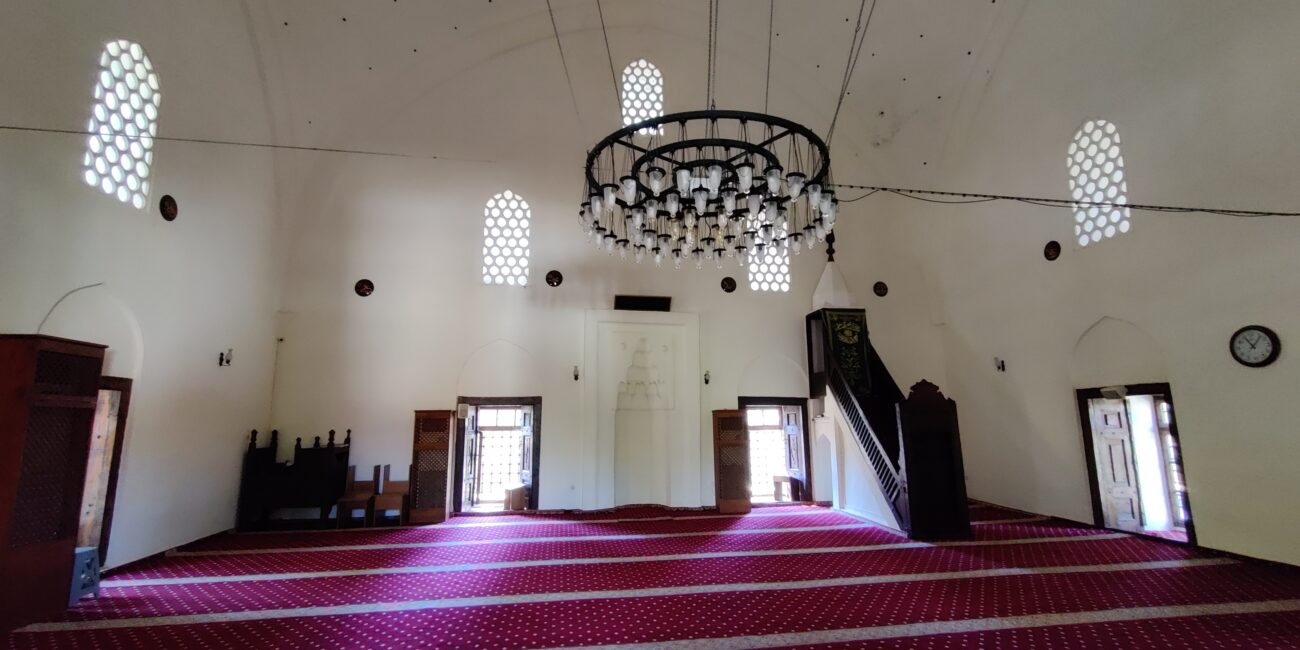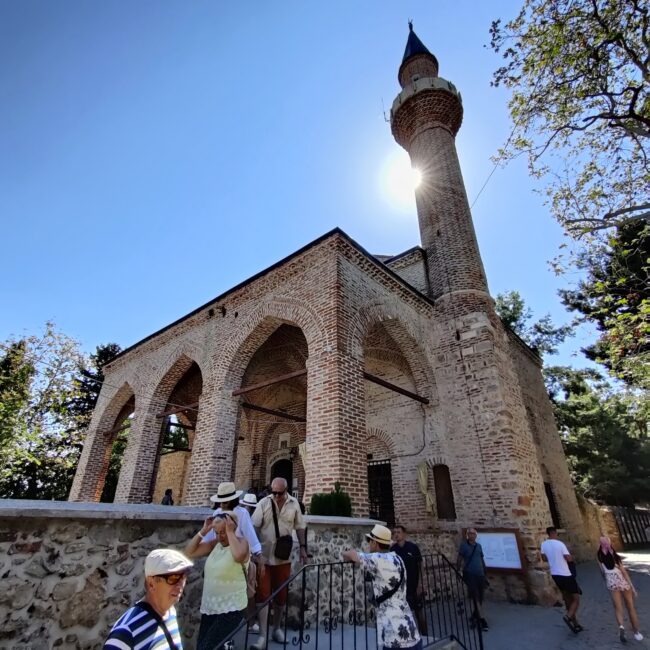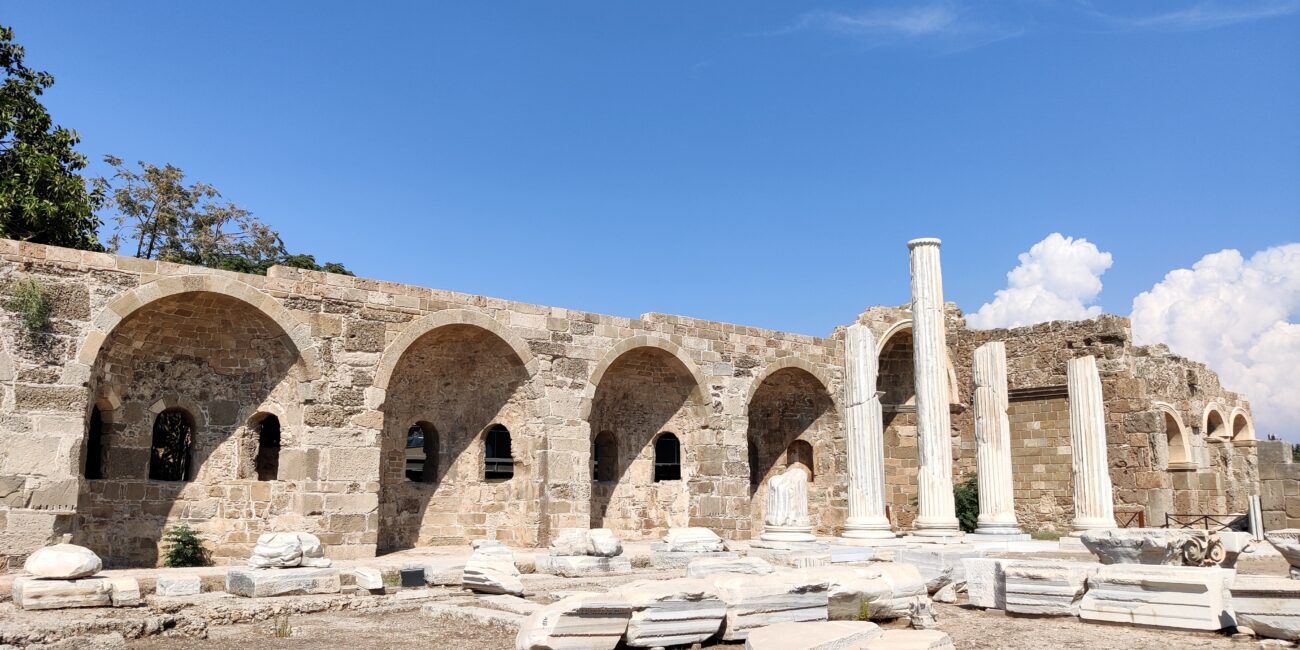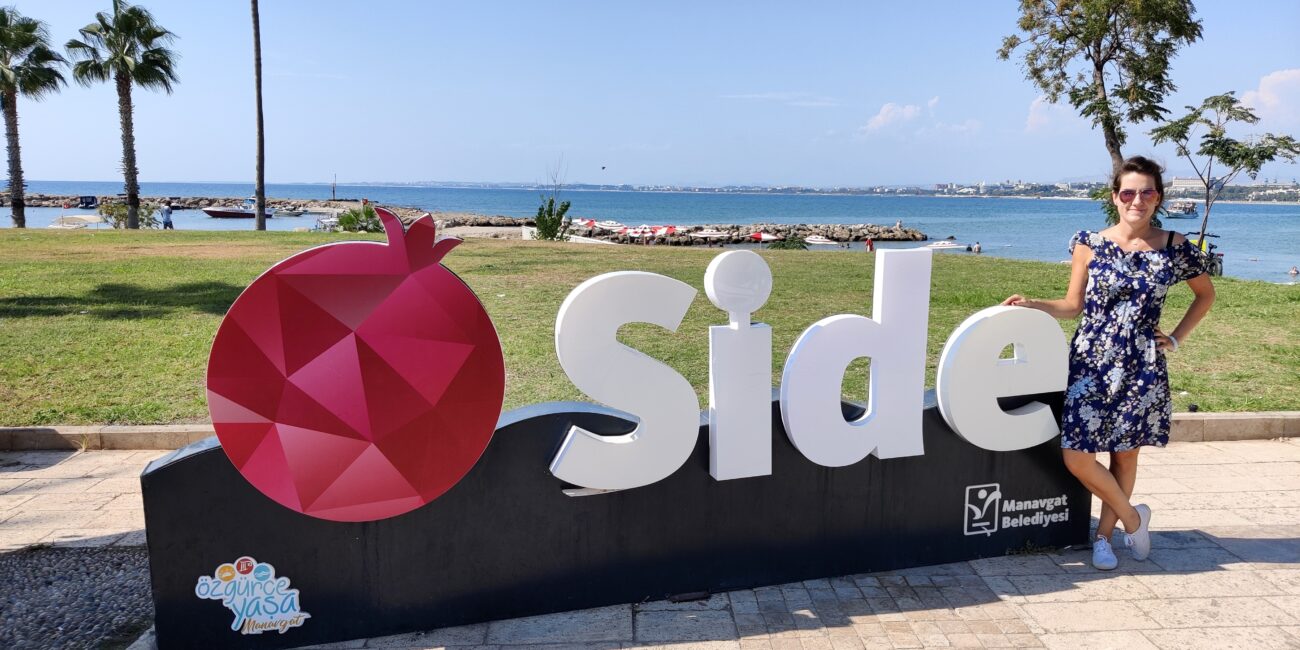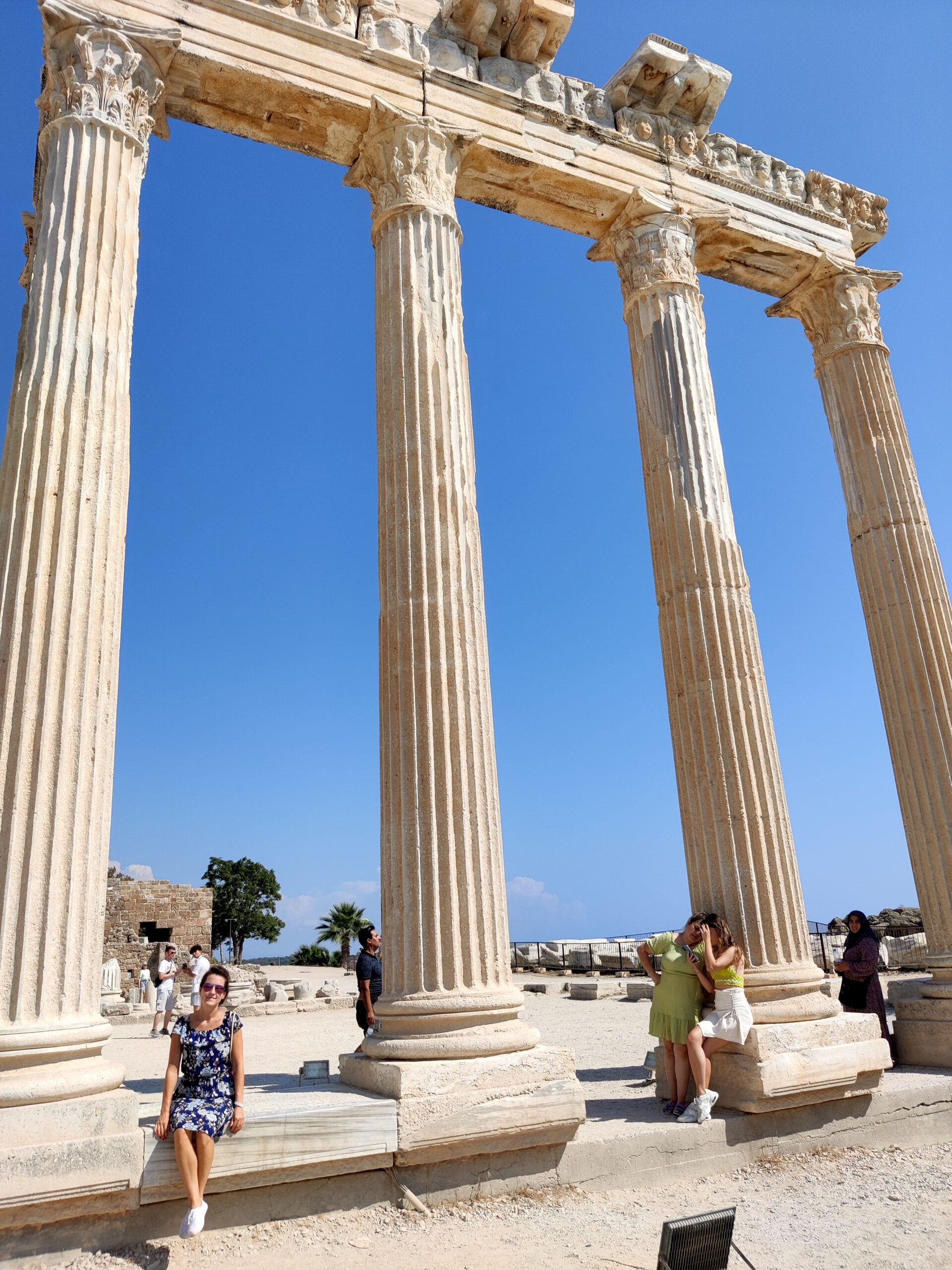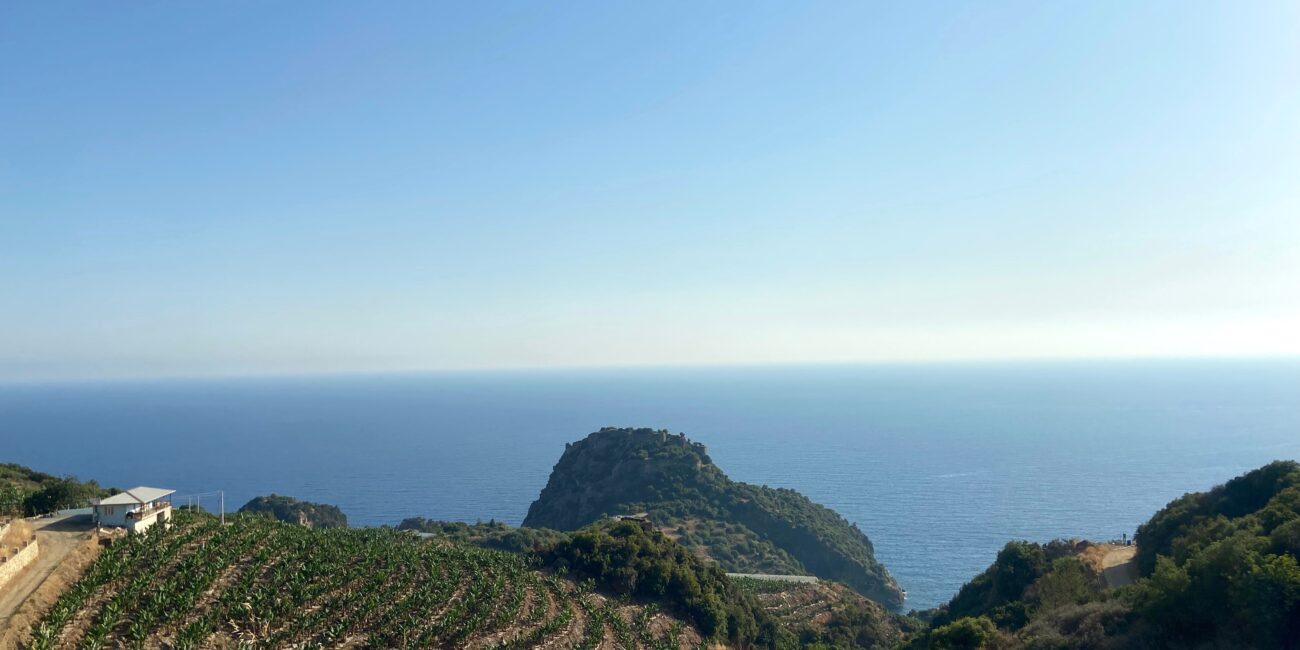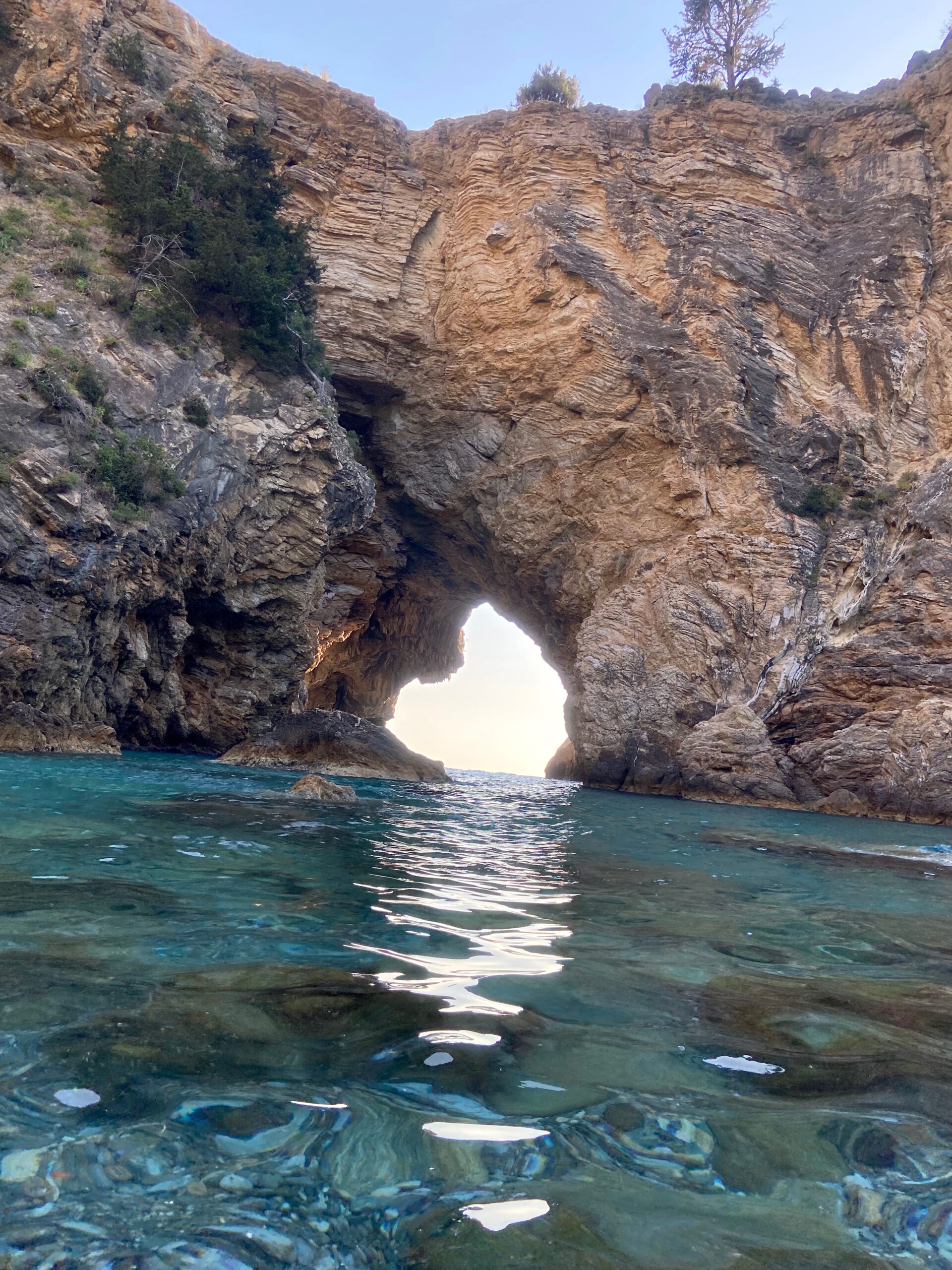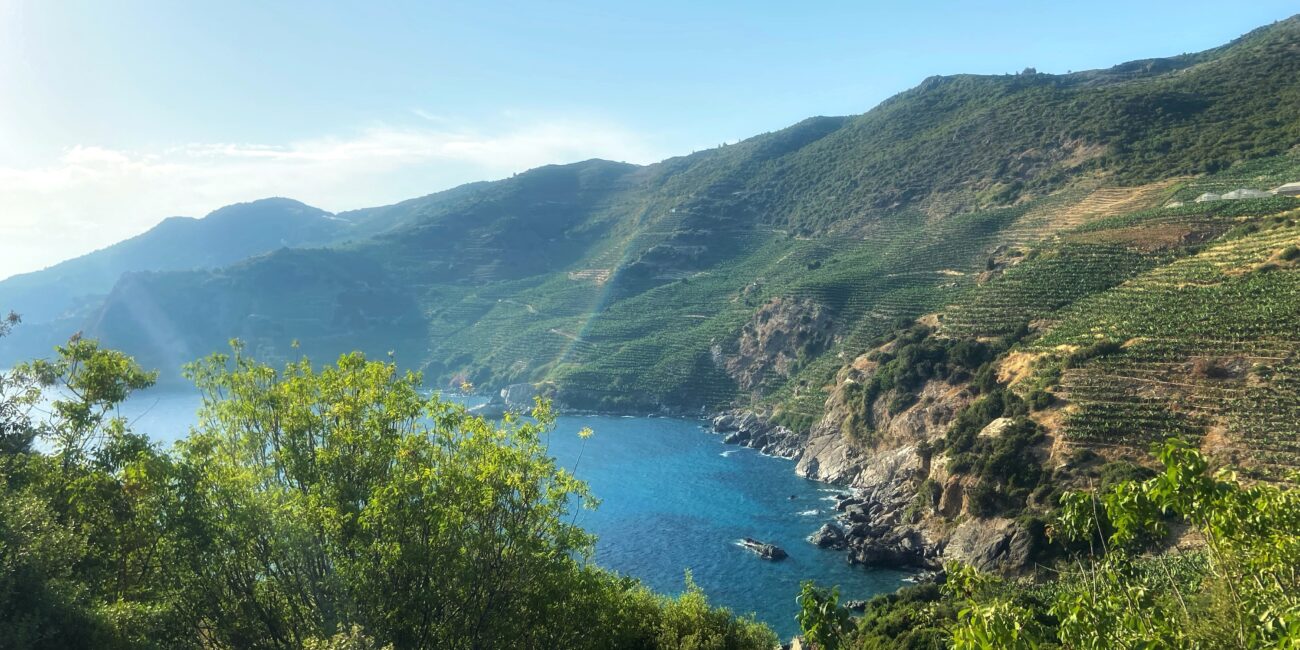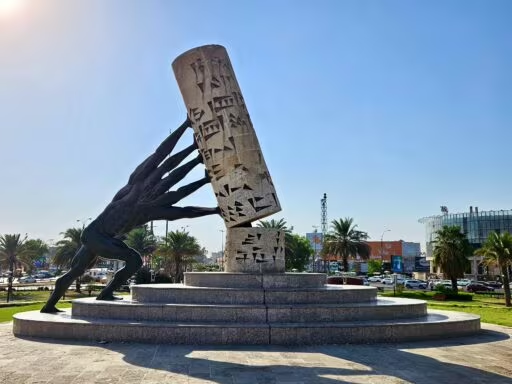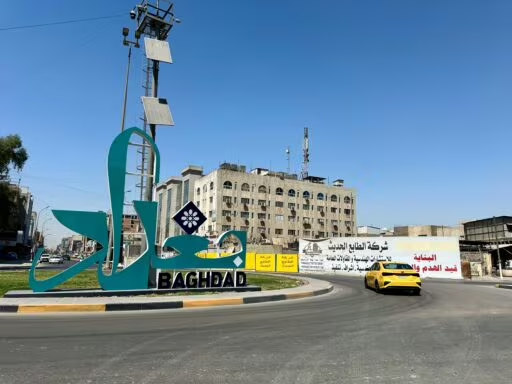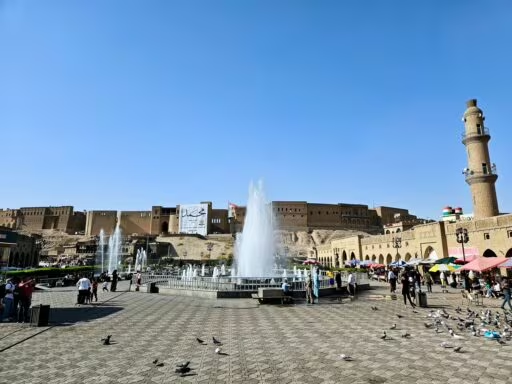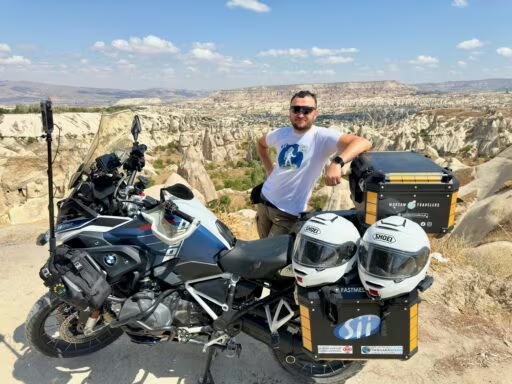This post is also available in:
Polski
Hello! 👋
Hi there! 😊 Today, it’s me, Jadzia, taking over the keyboard because this post will be all about my memories from the Turkish Riviera. Filip usually does the writing here, but this time, let me share my impressions with you. ✨
In September 2022, I had the chance to visit one of Turkey’s most stunning coastlines. It was a trip largely based on organized tours 🚌, which meant I had less freedom than I do now. Since Filip and I started traveling by motorcycle or rental car, we’ve been in charge of deciding what to see and when. That trip, however, was a completely different experience—more structured, but no less fascinating. 🏞️
The Turkish Riviera is a must-see destination. Sunny beaches, historic towns, mosques 🕌, and breathtaking views—all of it makes you want to come back again and again. Although I didn’t have the same travel flexibility back then as I do now, every moment was worth remembering. That’s why in this post, I’ll share what’s worth exploring on the Turkish coast, based on my own experiences. 🌟
Cami Manavgat Mosque
The Külliye Mosque in Manavgat, also known as the Central Mosque, is the largest in the area, with a capacity of up to 4,000 worshippers. Built in 2004, its Ottoman-inspired design features four minarets, intricate interior decorations, and an impressive chandelier. Entry is free, but there’s a dress code: shoulders and legs must be covered, and women need to cover their heads.
For me, though, it didn’t evoke any spectacular emotions. It was nice to see a Turkish mosque from the inside and appreciate its local significance, but it lacked that “wow” factor. Some parts were beautiful and interesting, but overall, it was more of a “I’m glad I saw it, but I wouldn’t return” experience.
Manavgat Waterfall
Manavgat Waterfall is one of those places worth visiting to escape the hustle and bustle and enjoy the tranquility of nature. While it doesn’t impress with its height, its wide cascade is captivating and draws the attention of visitors. 🌊
The sound of cascading water is soothing, and the gentle mist carried by the breeze adds a unique charm to this spot. It’s the perfect place to pause, take a breath, and enjoy some cool relief on a hot day. Around the area, you’ll find charming pathways and spots where you can sit and fully take in the view. 🌿
👉 For more information, visit the official website.
Green Canyon
Green Canyon, located near the town of Manavgat in the Antalya region, is a picturesque reservoir created by the construction of the Oymapınar Dam on the Manavgat River. It is one of the few canyons in Turkey where boat cruises are offered, making it a popular tourist attraction.
Filip had the chance to visit this spot independently, thanks to the mobility of a car. Traveling by car allows for flexibility in planning your visit and avoiding the crowds typical of organized tours. However, it’s worth noting that in some parts of the canyon, mobile network coverage can be limited.
While cruising the calm, green waters of the canyon, you can admire impressive rock formations and lush vegetation surrounding the reservoir. Some tours also offer the chance to swim in designated spots. However, it’s a good idea to check reviews from other travelers, as experiences can vary depending on the tour operator.
Dimcayi Nehir
The Dimçay River, located near Alanya, is famous for its unique restaurants set directly on the water. These floating platforms offer guests the chance to dine surrounded by nature, often sitting on traditional sofas placed above the river.
The menu features local specialties such as fresh fish, kebabs, and traditional Turkish breakfasts. An added attraction is the opportunity to swim in the cool river waters, providing a refreshing escape on hot days.
Alanya Castle
The Alanya Castle (Alanya Kalesi) is an impressive fortress perched on a hill approximately 250 meters above sea level. Its history dates back to the 13th century when it was built by order of Sultan Alaeddin Keykubad I after the conquest of the city in 1220. The fortress was constructed on the foundations of earlier fortifications from the Roman and Byzantine periods.
There are several ways to access the castle. Filip visited the site in April 2021, driving there by car, which gave him the freedom to explore the surrounding area. In contrast, during my visit in September 2022, I used the cable car (Alanya Teleferik), which opened in 2017. The cable car connects Cleopatra Beach to the castle, covering a distance of around 900 meters and ascending to a height of 300 meters. The ride offers panoramic views of the city and coastline, making it a memorable experience.
The castle grounds are home to numerous historical landmarks, including the 16th-century Suleiman the Magnificent Mosque and remnants of old defensive structures. Walking along the fortress walls, you can enjoy breathtaking views of the Mediterranean Sea, Cleopatra Beach, and the Alanya harbor. The castle is a symbol of the city and a key highlight on the region’s tourist map.
👉 For more information, visit the official website.
Red Tower
Kızılkule, or the Red Tower, is an iconic structure in Alanya. It was built in 1226 by order of the Seljuk Sultan Alaeddin Keykubad I. The tower gets its name from the red bricks used in its upper sections. It stands 33 meters tall and has a diameter of 29 meters. Its octagonal shape is a unique example of medieval military architecture.
The tower was designed by architect Ebu Ali Reha from Aleppo, Syria. It was intended to protect the harbor and nearby shipyard (Tersane) from sea-based attacks. In 1979, the tower’s interior was turned into the Alanya Ethnographic Museum. The museum showcases local handicrafts, traditional costumes, and tools used in the region.
👉 For more information, visit the official website.
Aqueduct of Aspendos
The Aspendos Aqueduct is a remarkable Roman structure built between the mid-2nd and late-3rd century AD to supply water to Aspendos. The aqueduct spans 19 kilometers, with a unique inverted siphon in the last 2 kilometers that helped it overcome changes in terrain.
The siphon has three bridge sections: 600, 900, and 150 meters long, separated by 30-meter towers regulating water pressure. The siphon pipes were made of precisely fitted limestone blocks, sealed with lime and olive oil mortar, ensuring watertightness.
Today, the aqueduct’s ruins attract tourists, showcasing advanced Roman engineering. The structure once supplied around 5,600 cubic meters of water daily to Aspendos.
Roman amphitheater at Aspendos
The Roman amphitheater in Aspendos, built in the 2nd century AD, is one of the best-preserved ancient theaters in the world. Its construction was completed in 160 AD, and the seating area was built on a natural slope, providing a perfect view of the stage.
The theater has a diameter of 96 meters and could accommodate between 7,000 and 13,000 spectators. It was designed by the architect Zenon, a native of Aspendos, during the reign of Emperor Marcus Aurelius.
👉 For more information, visit the official website.
Damlataş Cave
The Damlataş Cave, discovered accidentally in 1948 during port construction work in Alanya, is one of the city’s main tourist attractions. Located on the western coast of the peninsula, at the foot of Alanya Castle, it is near the famous Cleopatra Beach and the lower station of the Alanya Teleferik cable car.
The interior of the cave is marked by impressive stalactites and stalagmites that have formed over approximately 15,000 years. The temperature inside remains a steady 22–23°C year-round, with humidity reaching 95%. Due to its high carbon dioxide content, which is 10–12 times higher than outside, the cave is popular among people with asthma.
👉 For more information, visit the official website.
Cleopatra Beach
Cleopatra Beach (Kleopatra Plajı) is the most famous and popular beach in Alanya, stretching for about 2.5 km. According to legend, the Egyptian queen Cleopatra met with Mark Antony here, who gifted her the city of Alanya.
The beach has coarser sand, warm, crystal-clear water, and is surrounded by lush green forests, providing stunning views while you relax. Located around 2 km from the center of Alanya, it’s easily accessible for both a full day of beach lounging or a shorter break from sightseeing.
Suleyman Mosque
The Suleymaniye Mosque (Süleymaniye Camii) in Alanya is a historic mosque located within the Alanya Castle, known as the “Inner Castle.” Originally constructed in 1231 during the city’s reconstruction by Sultan Alaeddin Keykubad I, it was destroyed by a lightning strike. It was later rebuilt in the 16th century by order of Sultan Suleiman the Magnificent.
The mosque is known for its wooden windows and doors, which are excellent examples of Ottoman wood carving artistry. The mosque complex also includes a palace, schools, and military buildings. Compared to other mosques of its time, it stands out for its simplicity—it isn’t an overly grand structure, and its decorations and design are more modest when compared to more elaborate temples.
Apollo’s Temple
The Temple of Apollo in Side is an ancient Greek temple dating back to the 2nd century AD, dedicated to Apollo, the god of the sun, music, and poetry. Situated on a picturesque promontory by the Mediterranean Sea, it is one of the most recognizable symbols of the city.
Originally, the temple was surrounded by a Corinthian colonnade, with 11 columns on the longer sides and 6 on the shorter ones. To this day, five columns remain, having been reconstructed in the 1980s.
The ruins of the temple are now open to visitors 24/7, and their location right by the sea makes them especially attractive during sunset.
👉 For more information, visit the official website.
Gazipaşa Delikdeniz Kral Koyu
Delik Deniz and Kral Koyu are places Filip visited during his road trip. I didn’t get to reach them through organized tours, but from his stories, I know they’re a true hidden gem of the Antalya region.
You can reach Delik Deniz and Kral Koyu by car, but the last stretch requires walking. The steep path is slippery, so it’s best not to hike in flip-flops. There’s no tourist infrastructure at the site, which adds to its wild and natural appeal.
Kral Koyu Bay (King’s Bay) is surrounded by steep cliffs, and its crystal-clear waters have a beautiful turquoise hue. According to legend, King Antiochus I bathed here, which adds historical significance to the site. Nearby is Delik Deniz (Hollow Sea), a remarkable rock formation with a natural arch through which seawater flows, creating a breathtaking landscape.
Summary
In conclusion, this region has a lot to offer and is definitely worth visiting. You can explore ancient ruins, relax on picturesque beaches, or discover hidden gems like Delik Deniz and Kral Koyu. However, it’s important to stay cautious of potential local scams.
Filip, who traveled as a car driver, and I, using organized tours, both had the chance to appreciate the beauty of the area. Filip enjoyed more freedom and flexibility, while I benefited from guided tours that helped me understand the place’s history and culture.
Today, even when exploring independently, we can use AI tools to learn interesting facts about the places we visit. This way, we can fully enjoy this corner of Turkey, no matter how we choose to travel. 🌍

